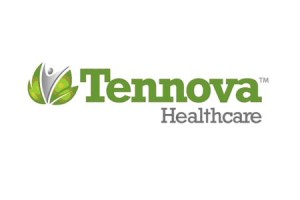Jefferson Memorial Hospital Increases Efficiencies Through Six Sigma Project
Patient Wait Times for Registration and Admitting Reduced By More Than 80 Percent
 Tennova Healthcare today announced that Jefferson Memorial Hospital has reached the impressive goal of 4 minutes for total average wait times to register patients scheduled for tests or procedures, such as diagnostic imaging and outpatient surgery. Hospital administrators attribute the faster service to process improvements associated with its Six Sigma quality initiative.
Tennova Healthcare today announced that Jefferson Memorial Hospital has reached the impressive goal of 4 minutes for total average wait times to register patients scheduled for tests or procedures, such as diagnostic imaging and outpatient surgery. Hospital administrators attribute the faster service to process improvements associated with its Six Sigma quality initiative.
Six Sigma, developed by Motorola in 1985, uses a set of tools and techniques for process improvements. The management philosophy became well known after General Electric made it a central focus of business strategy in 1995. In recent years, some healthcare providers have utilized Six Sigma to improve the patient care experience.
According to Robert J. Downing, Chief Financial Officer at Jefferson Memorial Hospital, Six Sigma emphasizes “setting extremely high objectives, collecting data, and analyzing results to a fine degree.” Prior to joining Tennova Healthcare, Downing participated in a 14-month Six Sigma certification program focused on healthcare, where he became a Six Sigma “black belt.” He has trained the hospital’s Registration and Admitting Department associates in the tools that are used to define, measure, analyze, design and verify processes.
“Six Sigma seeks to improve the quality of processes by identifying and removing the causes of defects in products and services,” Downing explained. “Thanks to our dedicated team, we have reduced the average time to complete the entire registration process from 28 minutes to an average of 4 minutes, an 86 percent reduction.”
In the U.S., the average time patients spend waiting to see a healthcare provider is 22 minutes, and some waits stretch for hours, according to a 2009 report by Press Ganey Associates, a healthcare consulting firm, which surveyed 2.4 million patients at more than 10,000 locations.
In East Tennessee, the average time patients sit and wait to register for outpatient services is 25 minutes, Downing explained. Add to that the average time to complete the necessary paperwork of 15 minutes and patients can spend 40 minutes or more registering. “Our 4 minutes includes everything. It’s door to registration, complete,” he said.
“Jefferson Memorial Hospital continually looks for ways to improve the patient care process. In the area of outpatient registration, we have focused our efforts on working smarter, eliminating flaws in our processes and increasing efficiencies,” said Colin McRae, Chief Executive Officer of Jefferson Memorial Hospital. “By reducing our door-to-doc wait times—from the minute a patient first enters the hospital to first seeing a healthcare provider—we seek to offer a better patient experience.”
The Six Sigma project, introduced in June, has followed a defined sequence of steps with checkpoints along the way. “We looked at every step and every second of our registration process with the objective of eliminating defects or errors,” Downing explained. “The central idea behind Six Sigma is that if you can measure how many defects you have in a process, you can systematically figure out how to eliminate them and get as close to perfect as possible. Throughout the process design, the team sought to ensure that every step in the new process added value for the patient.”
Among the improvements patients will see when they come to the hospital for a medical procedure is a self-service kiosk for documentation review and patient signing, where they can review their consents and paperwork as well as sign in electronically. “In a busy hospital waiting area, these interactive computer stations can speed the process for patients and take some of the workload from registration personnel, who are then freed up to help patients with more complicated registration or payment needs,” Downing said.
Plans are also underway to install electronic signage in the hospital lobby, which will “advertise” current registration wait times.
“Everything we do centers around our patients,” McRae said. “Above and beyond our mission of providing an environment of healing and innovative technology, we remain dedicated to delivering an exceptional patient experience and convenience for those we serve.
“Ultimately, the faster we can complete the registration process, the faster our patients will receive the specialized care they need, and the faster we can send them on their way home.” McRae said.
About Tennova Healthcare
Located in East Tennessee, Tennova Healthcare operates six acute-care hospitals and many other healthcare facilities across the region. More than 1,000 of the area’s leading physicians are on the active staff at Tennova facilities. One of East Tennessee’s largest employers, Tennova has more than 5,000 associates dedicated to providing compassionate care using the latest medical technology. For more information, visit www.Tennova.com









